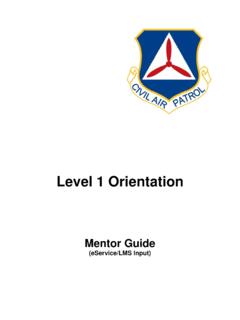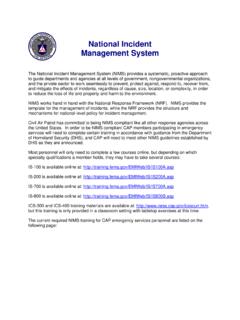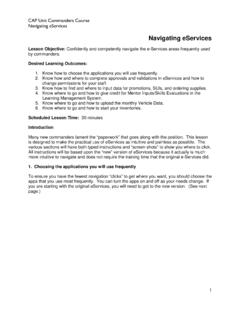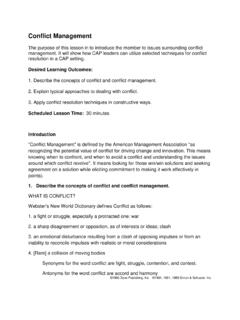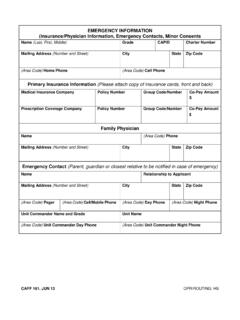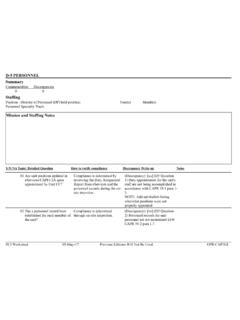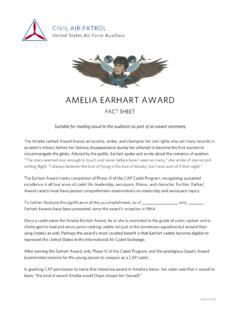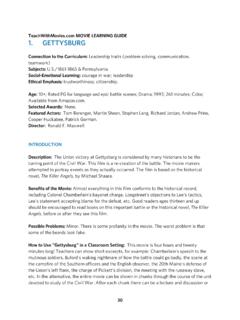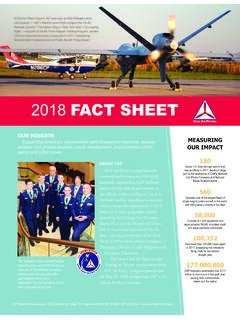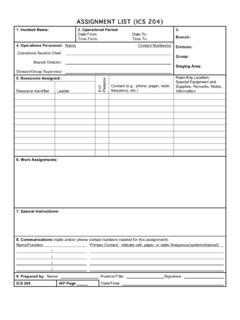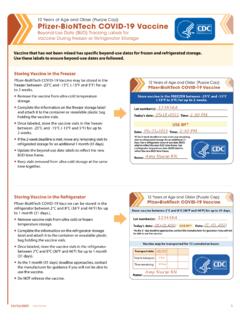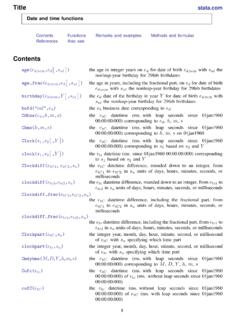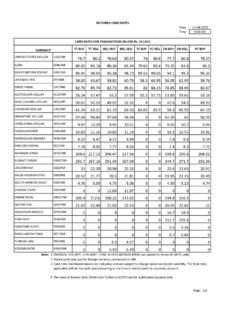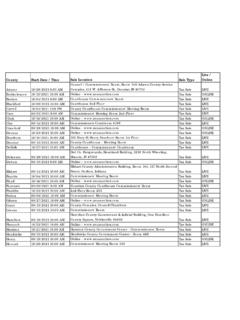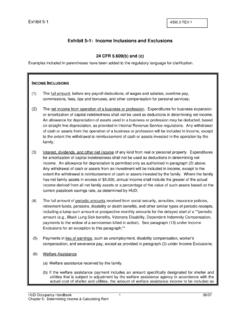Transcription of CAPF 160S - REAL TIME RISK ASSESSMENT WORKSHEET
1 CAPF 160S, Sep 19 1 of 2 CAPF 160S - REAL time RISK ASSESSMENT (Last, First)b. Unite. Emailf. Phone4. SUB- ACTIVITY orSPECIFIC TASK RISK LEVEL TO IMPLEMENT/WHO WILL IMPLEMENT 9. RESIDUAL RISK LEVEL How: Who: Who: How: Who: For additional entries for items 4 through 9, use CAPF 160HL RESIDUAL RISK LEVEL - (The highest residual risk level in Column 9, with all controls implemented): EXTREMELY SUPERVISION PLAN AND RECOMMENDED COURSE OF ACTION:NOTE: ALL RESIDUAL RISKS ASSESSED AS "H" OR "EH" MUST BE APPROVED BY OR DISAPPROVAL OF MISSION OR ACTIVITYAPPROVE DISAPPROVE a. Name (Last, First, Middle Initial) b. of Approval Authority7. RISK CONTROLHow: How: Who: How: How: Who: Who: c. Duty Title or Position(This form may be used for smaller events or activities when full deliberate risk management and CAPF 160 are not required) CAPF 160S, Sep 192 of 2 EH CAPF 160S - REAL time RISK ASSESSMENT WORKSHEET Risk ASSESSMENT Matrix Pr obability (expec ted frequency)Frequent: Contin uous, regula r, or inevitable occurrences Likely: Several or numerous occurrences Occasional: Sporadic o r intermittent occurrences Seldom: Infrequent occurrences Unlikely: Possible occurrences but improbable Severity (expected consequence) A B C D E Catastrophic: Death, unacceptable lo ss or damage, mission failure, or unit readiness eliminated I EH EH H H M Cr itical: Sever e injury, illness, loss, or damage.
2 S ig nificantly degraded unit readin ess or mission capability II EH H H M L Moderate: Minor injury, illness, loss, or damage; somewhat degraded unit readin ess or mission capability III H M M L L Negligible: Minimal injury, loss, or damage; little or no impact to unit readin ess or mission capability IV M L L L L Legend: EH extremely high risk H high risk M medium risk L low risk AFTER-ACTION FEEDBACK AND LESSONS LEARNED: NOTE: All residual risks identified as "H" or "EH" must be approved by CAP/CC Instructions for Completing CAPF 160S - Real time Risk ASSESSMENT WorksheetNOTE: This form is to be used for smaller events or activities that do not require the use of the CAPF 160, as directed in CAPR 160-1.
3 This form also serves as a guide for informal pre-activity risk assessments, pre-activity risk safety briefings, and as an instructional aid to reinforce the use of risk assessments and risk management in all CAP events and 1, 2: Activity. Briefly describe the event or activity. Examples include AE rocket launching event, cleaning the squadron hangar, or a squadron open 3: Prepared By. Enter the name of the person performing the risk ASSESSMENT . If done by a group, enter the name the person leading the risk 4: Sub-Activity. Every large event is made up of smaller tasks. List each. Using the example of cleaning the squadron hangar, sub-activities might include moving and securing the aircraft, moving furniture, power washing the floor, 5: Hazard.
4 List the hazards associated with each sub-activity (block 4). There may be multiple hazards associated with each 6: Initial Risk Level. Use the risk ASSESSMENT matrix (above) to assess the risk of each hazard, considering the probability and severity of the 7,8: Risk Controls. Describe the controls that will be used to reduce the probability or severity of each risk, including a description of how that control will be implemented and who is responsible for monitoring the 9: Residual Risk Level. Use the risk ASSESSMENT matrix to assess the risk level for each hazard, using the probability and severity of the risk with the selected risk controls in 10: Overall Residual Risk Level. This is the highest of all the risk levels in Block 9.
5 Note: Conducting with an event when residual risk is scored as "H" or "EH" requires approval of CAP/CC. Block 11: Overall Supervision Plan. Note who will be in charge of supervising the activities, and making go/no-go decisions as circumstances change. Who is "in charge" at the activity? Block 12: Approval/Disapproval. Following a review of all hazards and risk controls, the person in charge of the activity ( , squadron commander, activity director, wing commander, etc.) will approve or disapprove the event. Briefing the Plan: It is imperative that all participants are aware of the risks, risk controls, and their role in each activity. Leaders are advised to use this completed form as a briefing guide prior to the activity.
6
